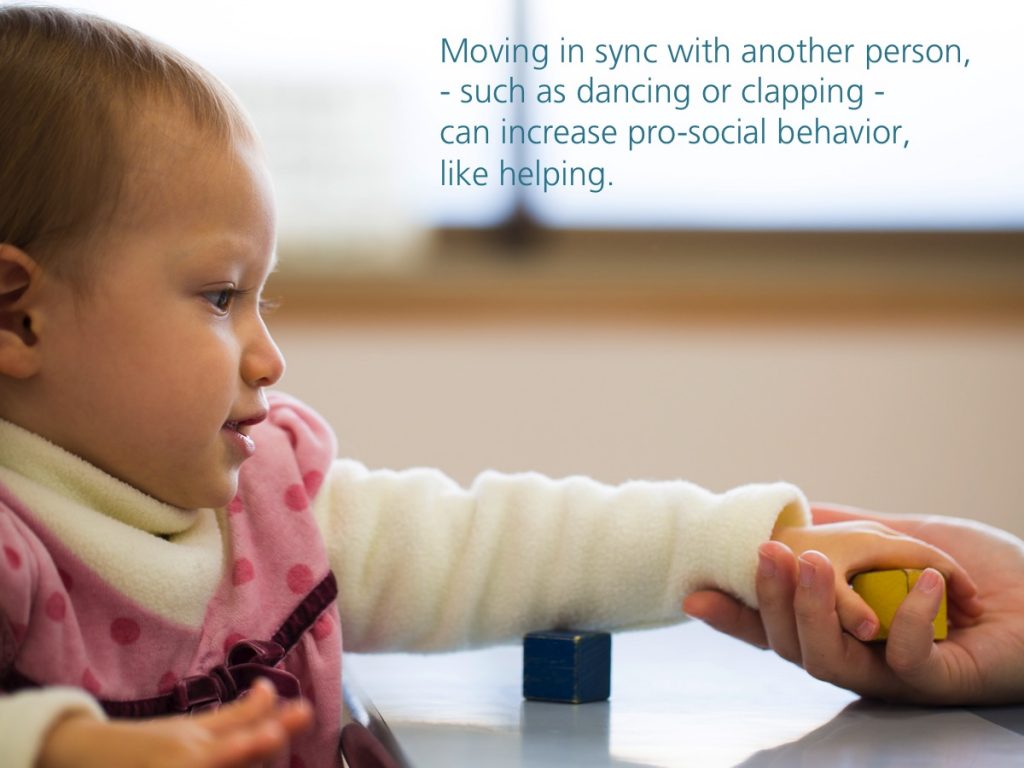
One of the best ways to enjoy music with children is through synchronized movements. Movements like dancing and clapping. Moving to a beat in time with another person may even help build interpersonal relationships. Research demonstrates that moving together can play an important role in how we create emotional bonds with one another.
Movement and synchrony inspires infants and children to behave socially toward other people. In one study, a group of 14-month-old infants was bounced in synchronized motions with an experimenter for two minutes to music. Another group was bounced out of sync with the experimenter. After the bouncing, infants were placed in a room with the experimenter. The experimenter pretended to drop a clothespin and mimed being unable to pick it up. Infants who were bounced in sync with the experimenter were more likely to try to help them pick up the pin. Infants who were bounced out of sync were less likely to try and help. Attempting to help another person is a type of pro-social behavior. The infants’ desire to help the experimenter demonstrates a powerful effect of moving in sync with another person.
-
- Beat
- the regular pulse of music
- Electroencephalography (EEG)
- a non-invasive method used to measure electrical activity in the brain
- Executive function
- a set of mental abilities that help us focus attention, remember information, and switch between tasks
- Magnetoencephalography (MEG)
- a non-invasive brain imaging technique used to determine which regions of the brain are active
- Meter
- a grouping of beats with specific patterns
- Neuroplasticity
- the ability to change how neurons in our brain are connected to each other
- Pitch
- the measure of how high or low we perceive sounds to be
- Pro-social behavior
- actions that are intended to help others
- Synchronized movement
- movements that occur in sync with musical beats and, or with other people
- Timbre
- the quality of a musical sound or voice that allows us to tell the differences between instruments or voices